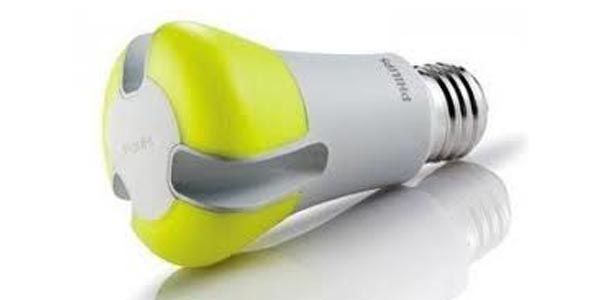Information you should know when viewing this video:
- The bulb uses red and blue LED elements. Blue LEDs are known to cause permanent damage to the retina of the eye.
- The bulb currently retails for around $50.00 US.
- Phosphor is currently in short supply and the price is going up. Phosphor is necessary for both CFL and this LED product to function.
- The L-Prize was a $10 million dollars prize to spur competition to create the most energy efficient lighting possible. The problem is that only Philips submitted an entry, and there are several award requirements that this bulb did not meet. But they got the prize anyway…. hummm…
Reference for below information:
[From a] comment by a Philip Premysler on Triple Pundit
It includes relevant documentation links (author’s own emphasis as well as highlights):
There are greater troubling issues beyond the price.
The problem is that the L-Prize contest which was supposed to foster U.S. green technology competitiveness was RIGGED.
As a foreign based (headquartered) corporation Philips was excluded from eligibility according to the law that established the L-Prize, in particular public law 110-140 section 655(f)(1). Under U.S. federal law the term “a primary place of business” used in the statute refers to the single headquarters location, which in the case of Philips is Amsterdam, Netherlands. Philips, of course, would have known that they were ineligible, so they put out PR flak alleging that the bulb was the result of a global effort. The truth, as evidenced in Philips patent on the bulb, is otherwise. See http://www.google.com/patents/ The bulb was developed in the Netherlands. Dept. of Energy energy bureaucrats who have been hobnobbing with Philips executives for years or DoE politicals who were looking for a photo-op apparently decided not to enforce the law.
The L-Prize entry also failed to meet key technical requirements of the contest. The Philips entry does not meet the stated uniformity requirement of the contest. This is admitted in a document obtained under the Freedom of Information Act, see HTTP://TINYURL.COM/43ECMQM.
The curt justification asserted in that document based on comparing uniformity to a standard incandescent lamp is factually (quantifiably) false. The putative L-Prize winner is actually less uniform.
The Philips entry also failed to produce the required amount of light.
In one test 62 out of 100 bulbs failed. (See above linked document) Whether the commercialized version will consistently produce the required amount of light is an open question [ed- unlikely given that the commercial version is not as good see above]. HOWEVER the stated procedure for the contest was that if the entry failed a required test, the entry would fail.
What happened is that Philips wanted to submit prematurely to claim the prize and the Department of Energy did not want to follow the rules and fail them, rather they embarked on RIGGING the contest. They kept the failure secret and proceeded with other tests.
The result is that a bulb developed by Dutch inventors, built with some (possibly most) of its parts made in Shenzhen China (see http://www.dailytech.com/Philips…) has been given a great initial advantage which may allow it to dominate U.S. competitors, even though the contest is RIGGED.
We may wind up with Dutch citizens enjoying social welfare benefits such as vacations for the unemployed, supported by Chinese workers working 12 hours a day and American consumers squeezed by $50 light bulb prices whether they pay that amount at the check out counter or indirectly pay for subsidies through their electric bill.


I see Philip Premysler had given a direct Patent link in later comments =
Philips patent
http://www.google.com/patents/about/ELECTRIC_LAMP.html?id=adH3AQAAEBAJ
indeed as he says, Dutch inventors and by “Koninklijke Philips Electronics N.V.” ie Netherlands